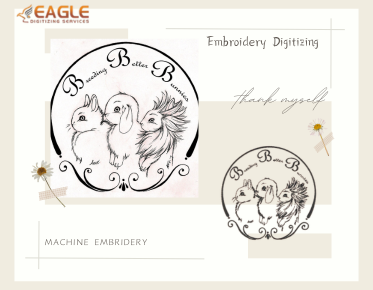How to Digitize an Image for Embroidery?
Embroidery digitizing is a fascinating process that transforms artwork into a format that embroidery machines can understand. This process is essential for anyone looking to embroider logos, designs, or any custom artwork onto fabric. Whether you're a hobbyist or a professional embroiderer, understanding how to digitize an image for embroidery can significantly enhance your craft.
Understanding Embroidery Digitizing
Embroidery digitizing involves converting a design into a digital file that an embroidery machine can read. This file guides the machine on how to stitch the design onto the fabric. The process requires specialized software and a good understanding of how embroidery machines work. The final product is a file that contains instructions for the machine, including stitch types, directions, and color changes.
Choosing the Right Software
The first step in digitizing an image for embroidery is selecting the right software. There are numerous embroidery digitizing software options available, ranging from beginner-friendly to professional-grade. Popular choices include Wilcom, Hatch, and Brother's PE-Design. These programs offer various features, such as stitch simulation, editing tools, and file format conversion, which are crucial for creating high-quality embroidery designs.
Preparing Your Image
Before you start digitizing, it's important to prepare your image. High-quality, clear images with distinct color separations yield the best results. Formats like JPG, PNG, or BMP are commonly used. If your image is complex, consider simplifying it to ensure that the embroidery machine can accurately reproduce the design. Remember, the clearer the image, the better the final embroidery will be.
Digitizing the Image
Once your image is ready, you can begin the digitizing process. This involves several steps:
- Import the Image: Load your image into the digitizing software. Most programs allow you to adjust the size and orientation of the image to fit your embroidery hoop.
- Outline the Design: Use the software's tools to trace the outlines of your design. This step is crucial as it defines the path the embroidery machine will follow.
- Assign Stitch Types: Different parts of your design may require different stitch types. For example, satin stitches are ideal for borders, while fill stitches work well for larger areas.
- Set the Stitch Direction: The direction of the stitches can affect the texture and appearance of the final embroidery. Adjust the stitch direction to enhance the design's visual appeal.
- Color Assignment: Assign thread colors to different parts of the design. This step ensures that the embroidery machine uses the correct colors during the stitching process.
Testing and Adjustments
After digitizing, it's crucial to test the design. Most software allows you to simulate the embroidery process, which helps identify any potential issues. Make necessary adjustments to the stitch density, direction, or type to ensure the design stitches out smoothly. Once satisfied, save the file in a format compatible with your embroidery machine, such as DST, PES, or JEF.
Working with Professional Services
If digitizing seems daunting, consider using professional embroidery digitizing services. Companies like Eagle Digitizing offer expert services to convert your artwork into high-quality embroidery files. They provide quick turnaround times and ensure that the designs are optimized for smooth sew-outs, saving you time and effort.
Advantages of Professional Digitizing
Professional digitizing services offer several advantages. They have experienced digitizers who understand the intricacies of embroidery machines and can create designs that minimize thread breakage and ensure smooth operation. Additionally, they can handle complex designs and provide revisions to ensure complete satisfaction.
Exploring Advanced Techniques
For those looking to expand their skills, exploring advanced digitizing techniques can be rewarding. Techniques like 3D puff embroidery, applique, and sequin embroidery add depth and texture to designs, making them stand out. Learning these techniques can open up new creative possibilities and enhance your embroidery projects.
Future of Embroidery Digitizing
As technology advances, the future of embroidery digitizing looks promising. With the integration of AI and machine learning, digitizing software is becoming more intuitive and capable of automating complex tasks. This evolution will make embroidery digitizing more accessible to beginners while providing professionals with powerful tools to push the boundaries of creativity.
Embroidery digitizing is a skill that combines art and technology. Whether you're digitizing for personal projects or professional purposes, mastering this process can elevate your embroidery work to new heights. As you continue to explore and experiment, you'll discover the endless possibilities that embroidery digitizing offers.


